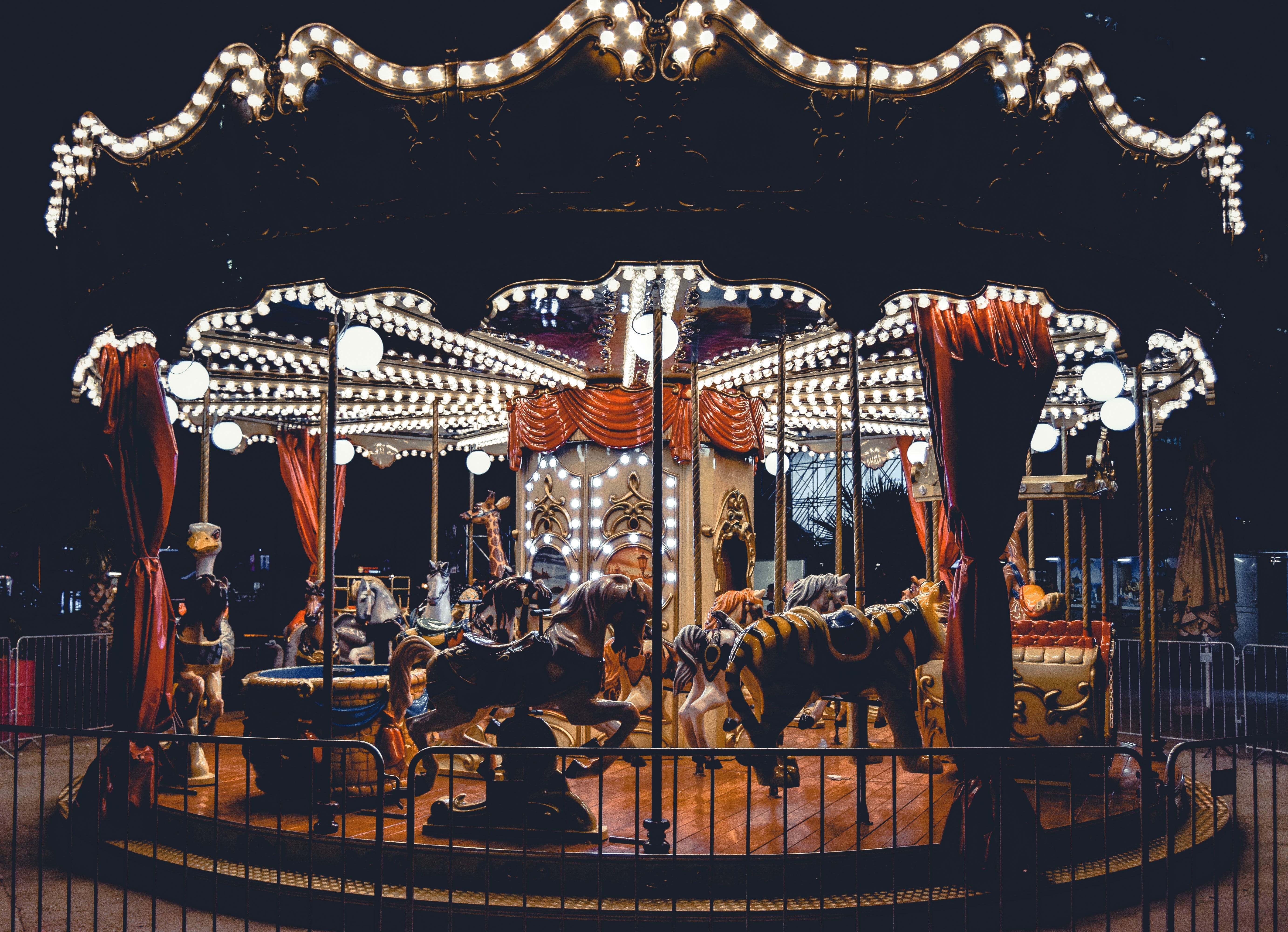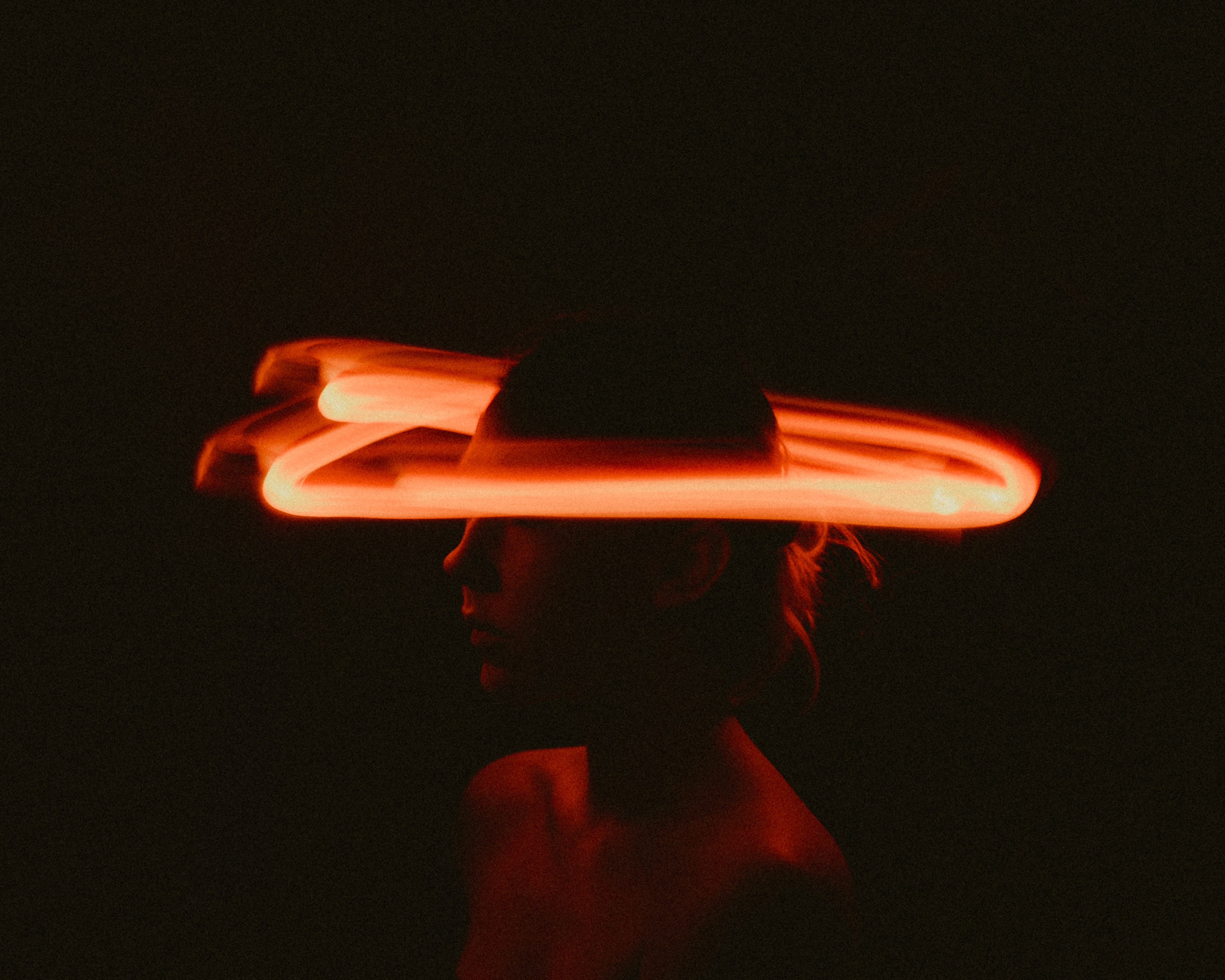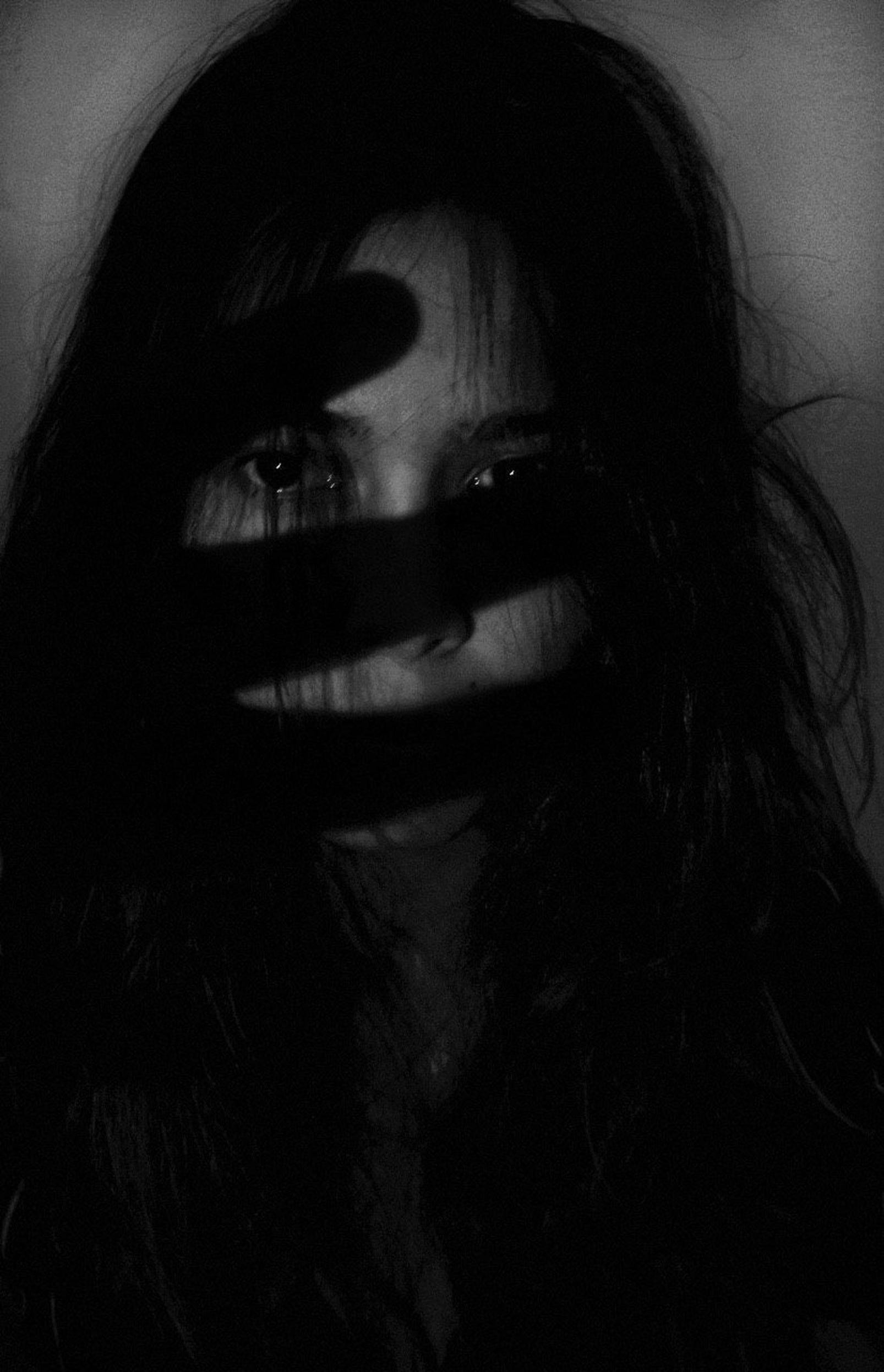Imagine you’re at a carnival, and directly ahead of you is four carousels. When you ignore the screaming children and the gum stuck to the bottom of your shoe, you see that the four carousels look identical in size, color, and decoration. The only place they differ is the speed in which they turn.

The two carousels on the left turn at a slow, leisurely pace. Anyone who were to ride on them should feel confident that they would be able to enjoy an lidless cup of coffee and expertly apply eyeliner at the same time. The carousels on the right, however, are moving at far faster speeds. Occupants should expect their hair to fly wildly behind them as they move around and around; they should expect that their stomachs might give a little turn. They should expect one hell of a ride.
Despite how similar they are, you have to ride all four.

When you settle in on the first carousel, the first thing you notice is the soft, peaceful music playing from the speakers. It wraps around you like a warm blanket. When it begins to move, the relaxing pace lulls you into a trance of serenity. The seats are plenty comfortable, despite their plastic status. At one point, you easily rise and hold on to the bar placed above your seat so you can enjoy the ride from a new position. When the carousel slows to a stop and then reverses its rotation, the small jolt is fun, and a little laugh escapes. When the ride is over, you exit wistfully, longing for the next time you get to enjoy it’s splendor.
You notice something is off the moment your eyes lay on the second carousel. It looks exactly the same, but still, there is something wrong. When you approach, the exact same music is playing, but this time your response isn’t serenity. This time, chills begin to run down your spine; your body shakes with the unpleasant sensory overload the music provokes. You push through, try to control your body’s response, and find a seat on the carousel before it begins to move. The seat, although an exact copy of the one on the first carousel, causes your lower back to scream in agony as your feet begin to fall asleep. You ignore these inconveniences. You refuse to let them ruin your day. As the carousel begins to move, instead of lulling you to near sleep, you find the pace disorienting.
It’s as if you smoked a massive joint before boarding the ride and now operate on a ten to twenty second delay.
You try to stand up and enjoy the ride from a new position as you did on carousel number one, but standing is difficult because your muscles have grown incredibly stiff in the three minutes you’ve been sitting. When you do manage to stand, the pins and needles in your feet are accompanied by uncomfortable electric shocks that rush up towards your knees. You push on. Raising your hand up to grab the bar, you notice your hand falling asleep immediately. You continue to hold on until your hand begins to cramp painfully from it’s position around the bar. You’re suddenly very cold, and then moments later you begin to sweat. You have to sit back down. When the ride slows to a stop and begins turning in the other direction, your stomach rises to your throat, but you say nothing. You hold it in. You’re so dizzy now you have to keep your eyes closed for the rest of the ride. Your right ear begins to ache. When the ride finally stops for good, your heart wants to flee the scene, but your body forces you to retreat at a snails pace. You’re exhausted.
Despite how horrible you feel, you trek on to the third carousel. The people exiting look joyous and energized. Your spirits begin to rise. When you approach the ride, the music is fast and enjoyable. Your head begins to bop to the beat. The stress from before begins to slip away. The seat you choose has a seat belt, which you quickly fasten and tighten to your waist. When the ride begins to move, enjoyable butterflies float around your belly and a smile pulls at your lips. You’re excited, anticipating a thrilling ride. As the ride picks up speed, your body is pressed into the seat, making it difficult to move, but you don’t care. You’re having fun. The carousel whips around and around and you scream along with other riders between bouts of laughter. You raise your arms up in the air and enjoy the force of the wind against them. When the ride begins to slow, you’re disappointed. You don’t want the fun to stop.
Begrudgingly, you exit and head towards the final carousel.
Being identical to the carousel ride you just enjoyed so thoroughly, your hopes rise as you approach carousel number four. The fast paced music is exactly the same, but you refuse to recognize the instant headache it causes. You will have fun. You MUST have fun. You find your seat and reach for your seat belt, but you can’t clip the two sides together. You’re too disoriented from the headache. Trying to focus, you close your eyes and attempt to take in a deep relaxing breath, but your chest aches from the expanse of your lungs. The ride begins to move, and you aren’t buckled yet. Frantic, you make one more desperate attempt at fastening your seat belt, all while anvils rise and fall in your stomach. The click of the seat belt is music to your aching ears. The seat belt is too large though, and you need to tighten it. As you attempt to pull on the strap, the ride begins to move faster and your body sways forcefully into your neighbor. Your hands are too weak and already cramping from the attempt of pulling on the strap, and now your body aches from the impact it had with your neighbor.

Thankfully, the neighbor notices your issue with the strap and offers to help. Swallowing your pride and flushing an uncomfortable red color, you accept. Once securely fastened, you close your eyes again and try to regroup. This ride is fun. You had fun on a ride just like this moments before. Your eyes are forced open from the sharp stabbing sensation in your chest. Your heart begins to race, pumping blood through the body at a far faster rate, but the pins and needles in your extremities would suggest they aren’t getting enough blood. The wind rushes through your hair, but the feeling isn’t pleasant. You can’t catch your breath. Your chest aches, your head throbs, and for some reason a twitch has developed in a nerve in your right calf that then uses its extremely long axon to send a signal up to your neck. Whenever your calf twitches, a muscle in your neck twitches right after. The carousel speeds along. Your throat begins to close up. The pain radiates from your chest, up your neck, across your shoulders, and down your arms. You wonder if you’re having a heart attack. Your neighbor asks if you’re having a panic attack. You shake your head no. You don’t have panic attacks. You’re not scared. You’re not stressed. You’re not overwhelmed by anything but the breakdown of your body.

When the ride finally slows to a stop and your seat belt is unclipped for you, you immediately head for the privacy of a public restroom stall. It is here that you begin to cry tears of frustration. You can’t understand why you can experience the exact same things over and over in life, but your body’s reaction to them will change at will. You can’t understand why you feel relatively normal one day, and then feel like you’re on your deathbed the next. You’re depressed and have anxiety, yes, but you’ve been dealing with it your entire life, and it’s well-managed. This thing that’s taking over your body is new. Every routine test has come back negative. You have a team of doctors (Family doctor, Neurologist, Endocrinologist, Gastroenterologist, ENT, Cardiologist, Gynecologist, Neuromuscular specialists, Psychiatrist) that have yet to find an answer, but all agree there is something wrong. It’s not in your head. They aren’t looking for horses or zebras anymore. They’re looking for a unicorn.
You leave the bathroom with a fake smile on your face.
These moments of forced happiness can make many people believe you aren’t actually ill, but you can’t let people see the way this affects you. You can’t let anyone know how truly terrified you are. If they knew, they’d ask a lot of questions that you can’t answer. If they really knew what you were going through, they’d pity you. You don’t want anyone’s pity. Your fake smile is accompanied by a joke. You often hide behind humor.
You walk through crowds of the carnival until you reach the four carousels again.
With a deep breath and silent words of encouragement, you step up to carousel number one, and do it all again.


